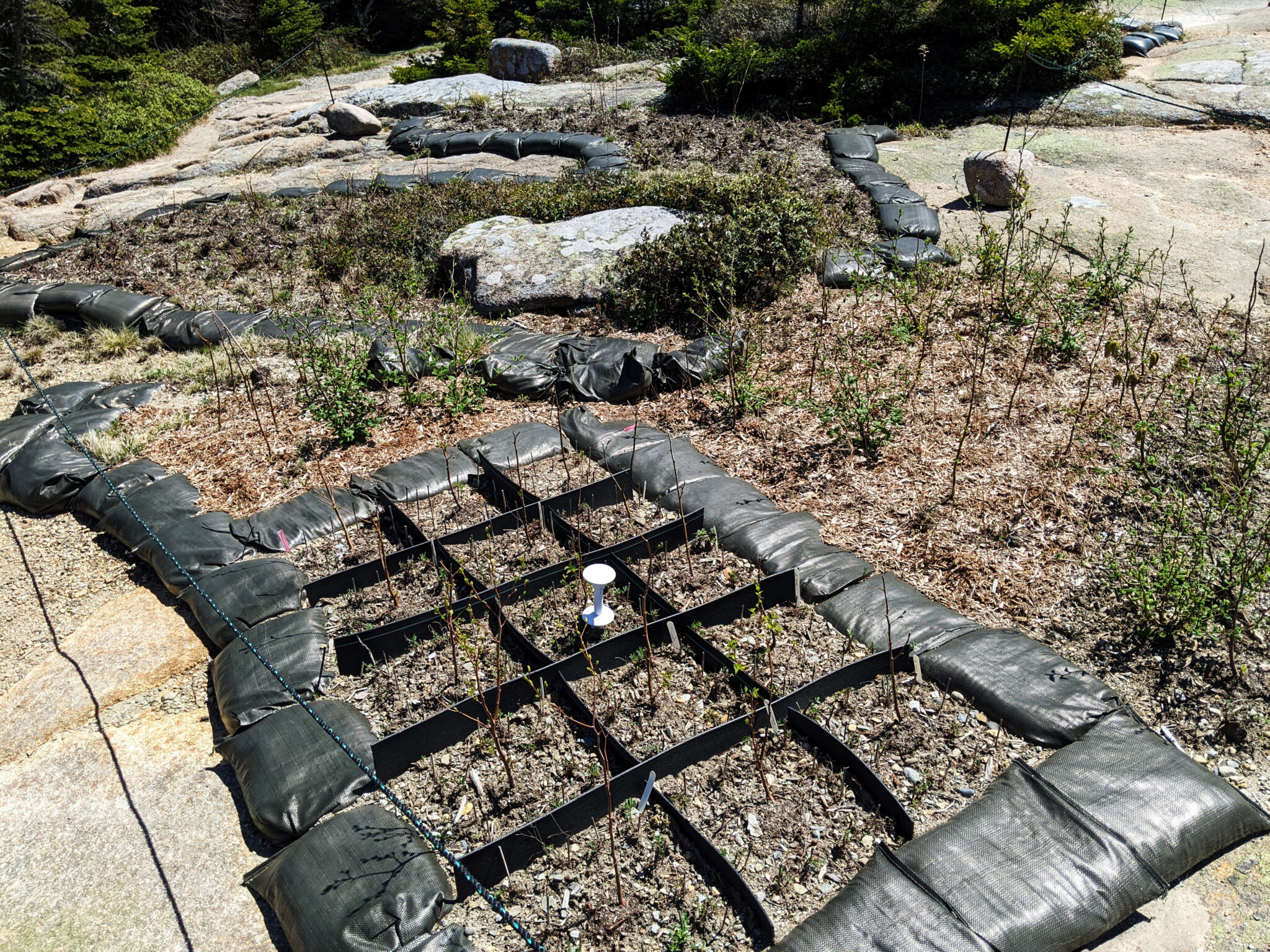by Chris Nadeau, Climate Change Adaptation Scientist
In Acadia, park staff are dealing with the impacts of more frequent and intense storms, higher sea levels, warmer winters with more rain, more frequent drought, and the spread of invasive species that thrive in warmer temperatures. These changes are having complex effects on Acadia’s ecosystems, and park staff now question the effectiveness of some traditional approaches for managing natural resources. How do park staff maintain the beauty and character of Acadia, while also adapting to a changing climate?
This is the challenge faced by park managers and caretakers of lands and waters around the world. But, it’s not that they don’t have options for how to respond to these changes. In fact, they have a bewildering number of climate change adaptation strategies to choose from, from maintaining high biodiversity in an ecosystem to transplanting plants from warmer climates (i.e., assisted migration).
What managers don’t have is evidence that these strategies work. Very few of these strategies have been tested on the ground, even though many, such as relocating plants from warmer climates, are novel approaches that could unintentionally cause harm.
For that reason, we should be implementing multiple management strategies simultaneously, including both climate-adapted and traditional approaches, to learn which strategies work best. It’s a learning-while-doing approach that combines natural resource management with science. As described in a recent article in the journal Biological Conservation, we need more of the kinds of climate adaptation experiments we are implementing in Acadia National Park.
The challenge is exemplified by three-toothed cinquefoil, a plant that grows on Acadia’s mountains and is key to restoring eroded areas on Cadillac and other summits. Although cinquefoil is doing well in restoration plots now, temperatures could become too warm for this important plant in the coming decades, jeopardizing restoration efforts. In the spring of 2021, we collected three-toothed cinquefoil plants from 31 locations ranging from Massachusetts to central Maine. We planted them on the summit of Cadillac Mountain in an experimental design that would allow us to compare current restoration methods with climate-adapted approaches. So far, the climate-adapted approaches aren’t working to mitigate heat stress as expected, which is a huge surprise, but also demonstrates the benefit of testing novel approaches. This is a small-scale example of the type of experiment we are recommending, and it shows we don’t need a huge, expensive effort to result in significant learning about which strategies might be effective.
As co-author and Acadia National Park Science Coordinator Abe Miller-Rushing has said, “Taking a learning-while-doing approach in Acadia is helping managers compare different strategies quickly, learning how to respond to change without having to wait for research results to be published, a process that can take years. We don’t have that long.”
With support from the National Park Service, Friends of Acadia, and Schoodic Institute, we are also taking a learning-while-doing approach in two of the largest wetlands in Acadia: Great Meadow and Bass Harbor Marsh, both of which are experiencing the impacts of a changing climate. We set up multiple test plots for comparing ways to prevent the growth and spread of invasive glossy buckthorn, including traditional removal methods, planting native shrubs to shade out buckthorn seedlings, and planting fast-growing native grasses. Learning quickly about the best methods to limit the spread of glossy buckthorn now will help us prepare for a future climate that might be even more favorable to this species.
The team is learning that this kind of experimental adaptation has many secondary benefits. For example, implementing a few different strategies at once means if something goes wrong with one, the entire project doesn’t fail.
These experiments also expand knowledge about how climate change is affecting park ecosystems. Much of what we think will happen to biodiversity as the climate changes is based on correlative models that make associations between climate and species occupancy. But these models are rarely tested, despite regular suggestions in the literature that the methods have limitations that could result in inaccurate predictions of climate change responses. Employing multiple management strategies under an experimental framework could help inform models of climate change biology and therefore improve predictions of how climate change will affect Acadia’s plants and animals.
For decades, natural resource managers around the world have invested significant resources trying to adapt their management plans to climate change, but few efforts have led to significant on-the-ground actions. We hope that promoting a learning-while-doing approach to climate change adaptation will accelerate efforts to learn, without delaying action on the ground. Climate change is here, but if we act now, we can avoid some of the worst impacts.
Learn more about Acadia’s climate adaptation work.
Read full article in Biological Conservation.

